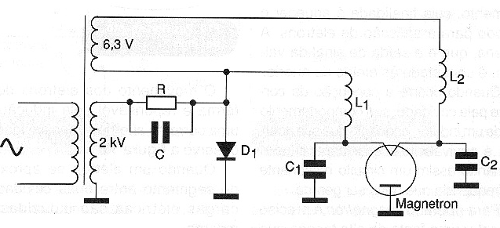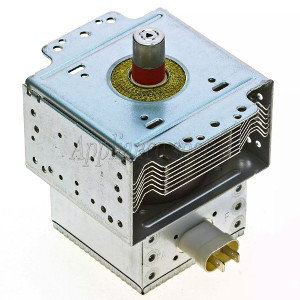If there is an indispensable household appliance in our kitchen these days it is the microwave oven. However, this appliance uses a technology which remains the same since its creation during World War II in 1945. New technologies, however, are being created for a new generation of electronic ovens, making the old microwave oven completely obsolete that we still have in our homes.
Common microwave ovens are based on the emission of a fixed frequency signal produced by a magnetron valve (see article ART580) in a basic circuit as in Figure 1.

However, the magnetron valves have a number of drawbacks which make them limited and require a new, more efficient technology for this type of application.
Magnetron valves waste a lot of energy, are too large and still operate only at a fixed frequency.
This means that in a common oven, in addition to having the waste of energy, the basic component is only the on-off type without any control of the emission, which could be modified depending on the type of food being prepared.
A "smart" oven could choose not only the power to be applied, as it does today, but much more like, for example, wavelengths more appropriate for the prepared food and even the possibility of working with foods of various types at the same time.

With the possibility which we can count on low-power RF semiconductors, which present much more advantageous characteristics than magnetron valves, we can already think of intelligent microwave ovens, such as Figure 3, suggested as a concept by NXP.

With the possibility of choosing not only the power but also the wavelengths, which combined provide the best preparation of the food, we will have a totally new concept for the microwave oven.
The very reduced size of the semiconductors will enable a more compact assembly and consequently the creation of portable ovens, although the power involved at least for the time being is still high.



